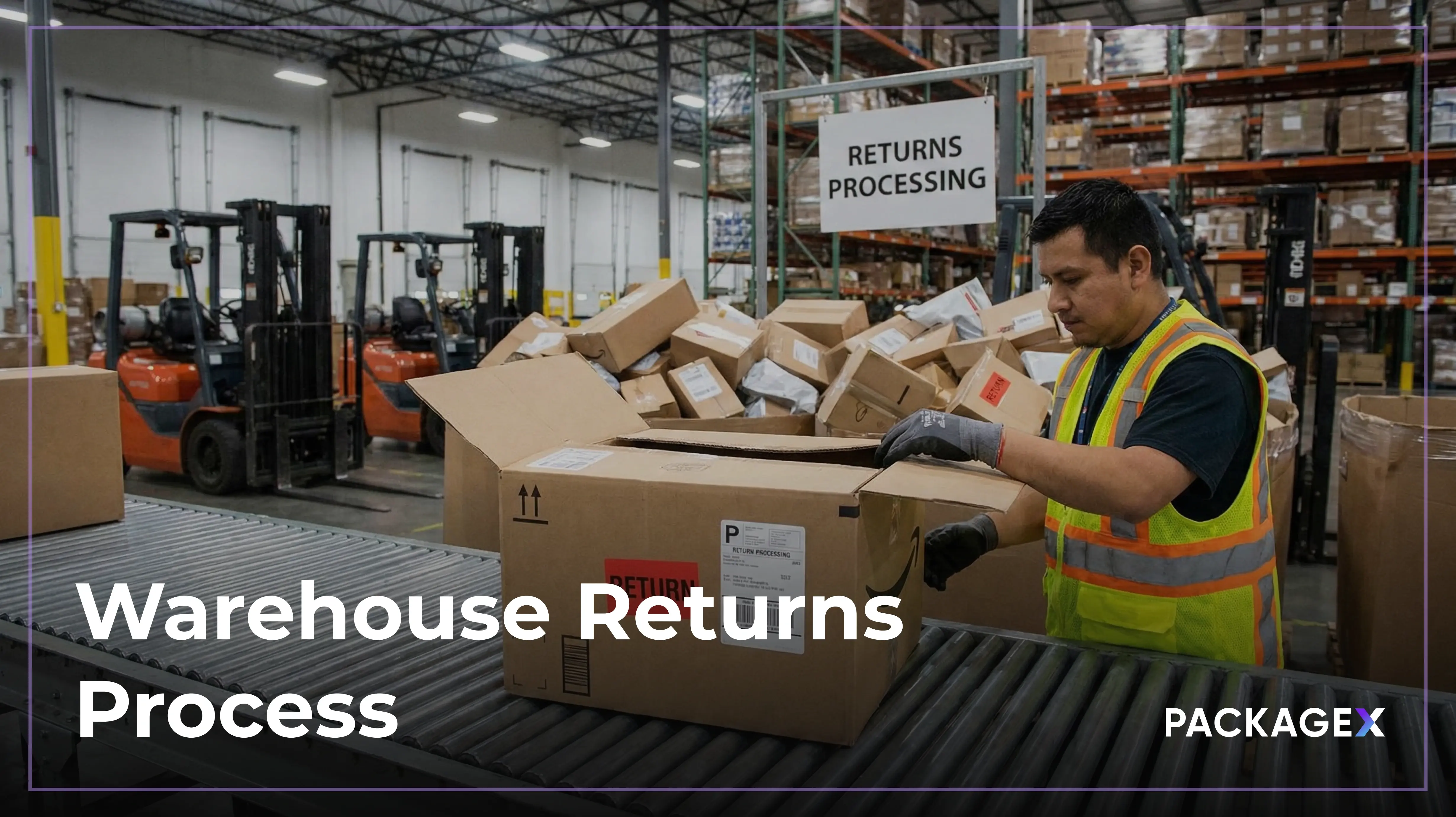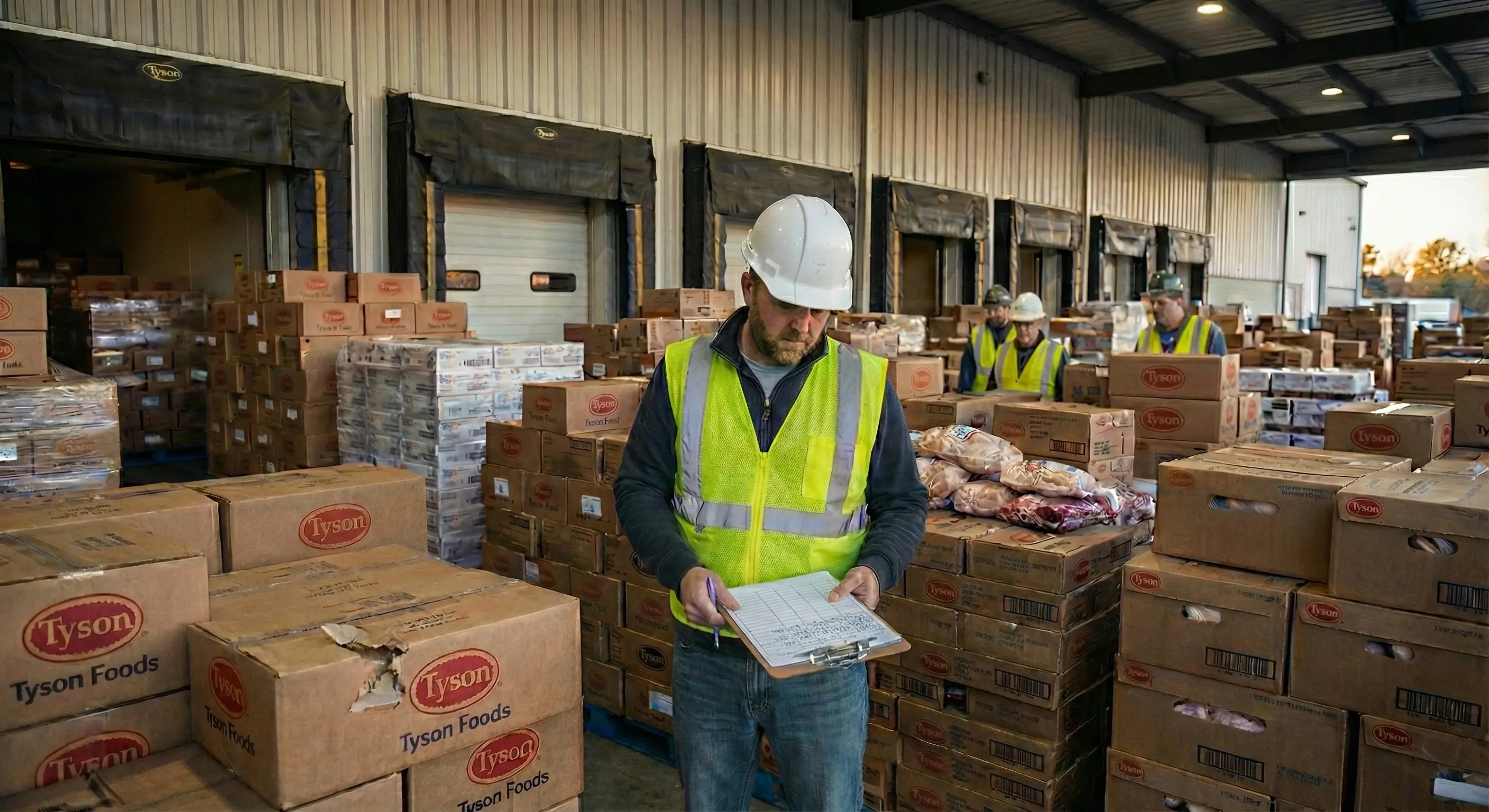Computer vision is a field of artificial intelligence (AI) that enables any piece of hardware with a camera to interpret data and make decisions based on captured images.
In logistics, computer vision is used in handheld devices like smartphones to extract data from package labels and detect damages on parcels offloaded at receiving docks. Computer vision is also used in other hardware like drones to facilitate real-time inventory tracking in warehouses.
In this article, we’ll help you understand how adding computer vision technology to your logistics operations can decrease human error and increase the speed at which packages move through your supply chain.
Evolution of computer vision in logistics
To understand how computer vision is used today for logistics applications, it helps to know why it was introduced to the industry in the first place.
Early adoption
The exact identification of the "first" company to use computer vision in logistics might be a little elusive, given the vastness and diversity of the sector. However, one notable early adopter in the realm of large-scale companies is Amazon.
Amazon started exploring computer vision applications to improve its logistics in the early 2010s. Their fulfillment centers saw the integration of Kiva Systems robots, a company Amazon acquired in 2012.
These robots, equipped with computer vision capabilities, navigate the warehouse floors autonomously, locate items, and bring them to human workers for packing. The goal was to streamline the picking and packing process, reduce human errors, and improve overall efficiency.
Amazon continues to use this technology to optimize its warehousing operations. The technology also inspired Amazon Recognition, an AWS service for robotics that improves quality assurance and operational efficiencies in manufacturing applications.
Modern applications
Computer vision technology is no longer reserved for the juggernauts of the world. With cloud services like Amazon Recognition and logistics cloud suites like PackageX, you can build for almost any application imaginable. However, there are three popular applications that computer vision is best suited for in logistics.
- Inventory management: Imagine having a warehouse worker who never blinks and keeps an eye on the shelves 24/7. Computer vision does just that. It automatically counts items, keeps track of what’s in stock, and sends alerts when it’s time to restock.
- Parcel sorting and tracking: This is like having a sorting hat, but for parcels. Computer vision swiftly identifies and sorts parcels, whether by size, shape, or destination. It also tracks packages in real-time within facilities, reducing the chances of misplaced items.
- Quality inspection: Computer vision systems can meticulously inspect goods and products for defects or damages, ensuring that only quality items make it through the supply chain. This saves on costs related to returns and reverse logistics.
Components of computer vision in logistics
Component #1: Image acquisition
Image acquisition is responsible for capturing visual data for further analysis and automation. High quality images are essential for assessing the condition of goods, reading labels, and recognizing objects.
In warehousing, cameras and sensors acquire images of incoming and outgoing packages, ensuring accurate inventory management and identifying possible damages or discrepancies. This acquisition process is often facilitated through smartphones, scanners, ground robots, and drones that capture aerial views of large stock areas.
The application of image acquisition in logistics is not limited to warehousing but extends to transportation as well. For instance, in vehicle routing, images of road conditions, traffic patterns, and obstacles are acquired in real-time to aid navigation and optimize delivery routes.
Component #2: Image pre-processing
Once images are acquired, the next step involves the manipulation and enhancement of images for better interpretation by machine learning models. Techniques such as noise reduction, histogram equalization, and normalization are employed to eliminate noise and maintain consistent results under different lighting and weather conditions.
Component #3: Object recognition
Object recognition enables the identification and classification of objects within images.
In logistics, it’s applied to recognize various items, packages, vehicles, and even people. For example, in a warehouse setting, object recognition algorithms are used to identify different products and their quantities, read shipping labels, and route packages to the correct conveyor belts and carrier vehicles.
The application of object recognition in logistics is not confined to warehouses; it is extensively used in transportation. The real-time recognition of road signs, obstacles, and other vehicles contributes to safer and more efficient transportation.
Component #4: Decision processes
Decision processes are the culmination of the preceding components, where the extracted features and recognized objects are used to make informed decisions by pairing computer vision with artificial intelligence and natural language processing (NLP) technology.
In logistics, combining CV and NLP is integral for optimizing operations, allocating resources, and responding to changing conditions.
When it comes to inbound logistics and label scanning, the technology is used alongside AI to train itself with millions of labels in your specific industry, country, and language. Based on the recognition of packages and their features, decisions regarding sorting, storage, and transportation are made, ensuring the timely and cost-effective movement of goods.
How computer vision is used in real-world logistics
Tyson uses CV to count packed chicken trays
Tyson Foods announced a collaboration with AWS in February 2020 to implement computer vision technology at its chicken facilities to refine inventory management. This collaboration led to the development of a cutting-edge chicken tray counting CV solution that offers real-time insights into inventory quantities.
The traditional methods Tyson used for monitoring packed chicken tray counts wasn’t very accurate and couldn't provide immediate feedback on overproduction or underproduction. Given the vast processing capacity of Tyson (45 million chickens per week), achieving precise counting in production counting is paramount.
The solution developed by Tyson uses CV to offer accurate, real-time assessments of processed chicken, which helps employees promptly spot and address potential issues in the packaging and production processes.
According to the AWS blog post about this solution:
“A trained object detection model can predict bounding boxes of all the trays placed in a bin at every video frame. This can be used to gauge tray counts in a bin at a given instance. We also know that at any point in time, only one bin is being filled with packed trays; the tray counts continuously oscillate from high (during filling) to low (when a new bin obstructs the view of filled bin).”
WeWork uses CV to ingest shipping label data
As the coworking company WeWork expanded its global footprint, it faced significant challenges in package management for its mailrooms. Their initial barcode-based system was flawed, especially when a single package passed through multiple couriers, leading to multiple barcodes. This caused confusion in the system and resulted in incorrect notifications and lost packages.
To solve this issue, WeWork uses PackageX Receive.
With this technology, WeWork employees who manage inbound logistics take a picture of a package label using a smartphone. PackageX then uses optical character recognition (OCR) and computer vision to read every bit of text on the label, including barcodes and QR codes. Next, PackageX Receive uses NLP technology based on an algorithm trained with over 10 million labels to turn the raw text into meaningful data.
The image below shows how the system buckets the data captured into 34 classes, inferring the sender/receiver details, package information, and other logistic attributes.
PackageX Receive yields over 95% accuracy in terms of reading shipping labels across the globe, making it an industry-leading solution for logistics receiving and data ingestion. The system also notifies relevant coworking tenants and stores the information, streamlining global operations with its support for 57 languages.
With this blend of computer vision and NLP, WeWork reduced package processing time by 85% and saved an average of one hour daily per location, per employee. These savings were redirected to enhance customer service and reduce operational costs.
One reason the WeWork team sees so much success with PackageX OCR technology is that it was built from the ground up with advanced AI and machine learning algorithms – other providers typically tack on OCR to existing capabilities. Also, the solution was easy for WeWork to adopt as the solution requires no advanced hardware – just an everyday smartphone.
The business case for computer vision in logistics
In 2020, the computer vision market size stood at $3.6 billion and it's projected to reach $19.1 billion by 2027, growing at a CAGR of 25.7%. This rapid growth indicates the widespread adoption and trust industries are placing in the technology.
In less than a decade, today’s computer vision systems have reached 99 percent accuracy from 50 percent, making them more accurate than humans at quickly reacting to visual inputs. This means significant cost savings in storing, sorting, picking, packing, shipping, and many other logistics-related activities.
Considerations for using computer vision
Optimizing logistics operations with computer vision is a good idea in general, but is it right for your specific business? What follows are some questions you can consider with your team to determine this.
Is too much time spent on manual data entry?
One of the primary challenges faced by many companies in the logistics sector is the extensive time spent on manual data entry. Tracking inventories, updating records, and ensuring accurate data input are repetitive tasks.
By automating data entry processes using cameras and advanced algorithms, computer vision can instantly capture, analyze, and input data into systems without the need for human intervention. This can be particularly effective in scenarios such as scanning barcodes, reading labels, or even detecting and categorizing goods as they move through a supply chain.
Is data entry prone to human error?
Human error remains one of the most pressing challenges in the logistics sector. In an environment characterized by fast-paced operations and vast amounts of data, even minor mistakes can result in significant losses. Computer vision is capable of consistently monitoring, analyzing, and automating various tasks with a degree of accuracy and speed that surpasses human capabilities.
When considering the integration of computer vision to reduce human error, companies must evaluate its potential in areas such as inventory management, shipment tracking, and warehouse operations.
In inventory management, computer vision systems can scan and recognize products, ensuring the correct items are picked, packed, and shipped, thereby reducing misdeliveries or returns. Similarly, in warehouse operations, such systems can monitor the movement of goods, ensuring they're stored in the correct locations, while also identifying potential safety hazards.
{{returns-webinar}}
Getting started with computer vision for logistics
If you're a logistics professional aiming to integrate computer vision with your existing operations, here's a simple pathway to get you started.
Step 1: Identify the need
Pinpoint areas in your logistics operations that would benefit from visual data interpretation. Common applications include warehouse management, package sorting, vehicle tracking, and damage inspection.
Step 2: Set clear objectives
Determine the specific goals you want to achieve with computer vision. Are you looking to speed up package sorting, improve accuracy in inventory counts, or monitor cargo in real-time? Having clear objectives will guide your technology choices and implementation strategies.
Step 3: Select the right technology
With multiple computer vision platforms and tools available, make choices based on your objectives. Open-source platforms like OpenCV can be a good starting point, but for more complex applications, consider specialized enterprise solutions that offer APIs or pre-built apps.






